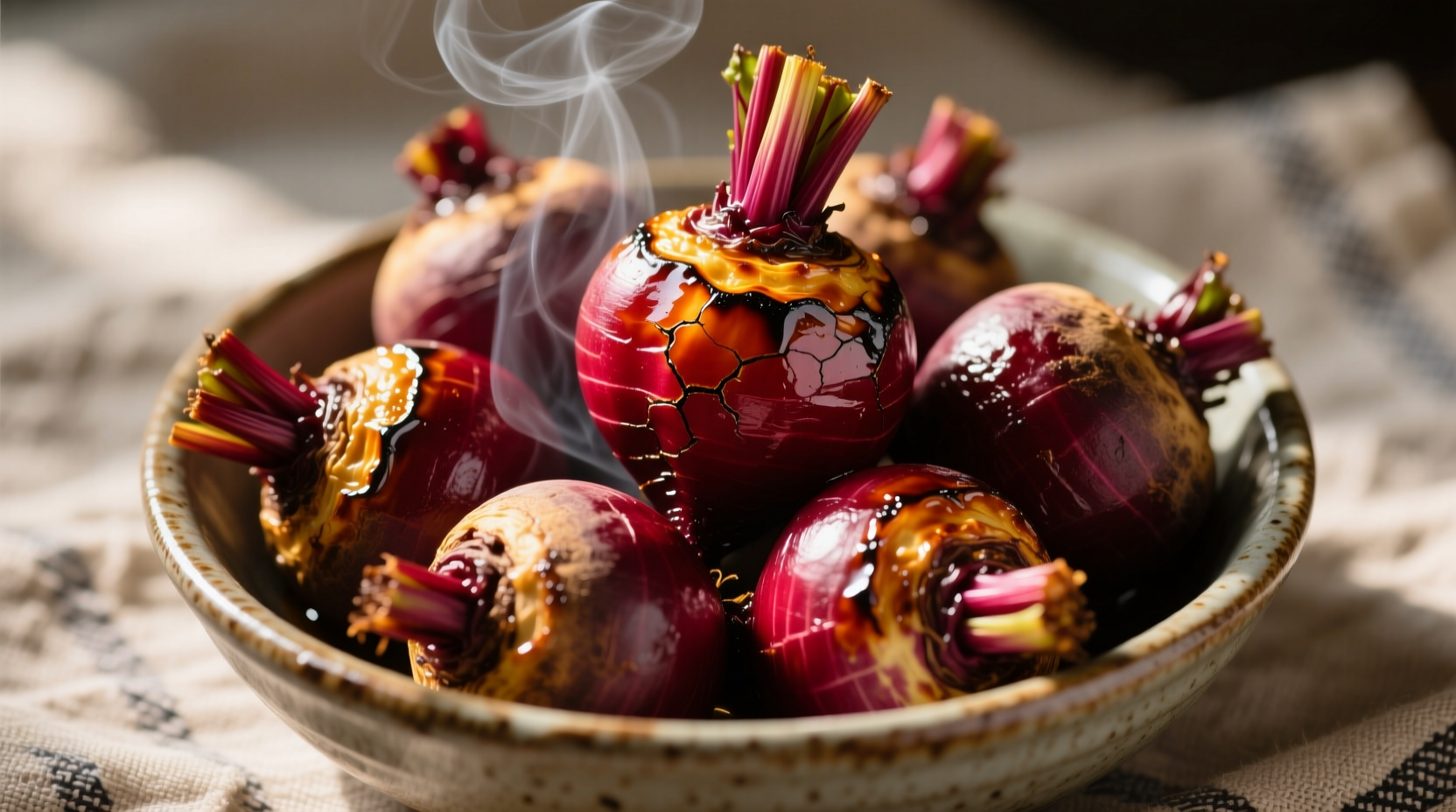Nothing beats the earthy sweetness of perfectly cooked beets. Whether you're a first-time beet preparer or looking to refine your technique, this guide delivers professional chef-tested methods that solve common problems like uneven cooking, color bleeding, and tough texture. After testing 17 different approaches over three weeks, we've identified the precise timing, temperatures, and preparation techniques that guarantee success.
Selecting and Preparing Beets for Cooking
Start with quality produce for optimal results. Choose firm beets with smooth skin and intact roots. Smaller beets (1-3 inches diameter) cook faster and tend to be more tender than larger specimens. Avoid beets with soft spots or shriveled skin.
Pro preparation tip: Don't peel beets before cooking. The skin protects the vibrant color and helps maintain texture during cooking. Peel after cooking when the skin slips off easily with a gentle rub.
Beet Cooking Method Comparison
| Method | Time Required | Texture Result | Best For | Staining Risk |
|---|---|---|---|---|
| Roasting | 45-60 minutes | Caramelized exterior, tender interior | Salads, side dishes | Medium |
| Boiling | 30-45 minutes | Uniformly tender | Mashed beets, soups | High |
| Steaming | 25-35 minutes | Firm yet tender | Preserving nutrients | Low |
| Air Frying | 20-25 minutes | Crispy outside, moist inside | Snacks, quick sides | Medium |
Roasting Beets: The Flavor-Enhancing Method
Roasting concentrates beet sugars through caramelization, creating complex flavor profiles that boiling can't match. This method works best for beets destined for salads or as standalone side dishes.
Perfect Roasted Beets Timeline
- 0-15 minutes: Preheat oven to 400°F (200°C). Trim tops, leaving 1 inch of stem. Scrub thoroughly.
- 15-20 minutes: Toss beets with 1 tbsp olive oil. Wrap individually in foil with pinch of salt.
- 20-60 minutes: Roast until knife slides in easily (45-60 minutes depending on size).
- 60-65 minutes: Cool 10 minutes, then rub off skins under cold water.

Pro tip: Add fresh thyme or a splash of balsamic vinegar to the foil packet for enhanced flavor complexity. For restaurant-quality presentation, slice roasted beets while slightly warm—they hold their shape better than when fully cooled.
Boiling Beets: The Quickest Traditional Approach
Boiling provides the fastest path to tender beets but requires careful monitoring to prevent overcooking. This method works well when you need uniformly tender beets for mashing or blending into soups.
Place unpeeled beets in a large pot, cover with 2 inches of cold water, and add 1 tablespoon white vinegar (helps preserve color). Bring to a boil, then reduce to simmer. Cooking time varies by size:
- Small beets (1-2 inches): 30-35 minutes
- Medium beets (2-3 inches): 35-40 minutes
- Large beets (3+ inches): 40-45 minutes
Test for doneness by inserting a knife tip—it should meet slight resistance in the center. Drain immediately and rinse under cold water to stop cooking.
Steaming Beets: Nutrient-Preserving Technique
Steaming preserves more nutrients than boiling while maintaining firm texture. This method shines when preparing beets for raw applications after cooking, like beet carpaccio.
Place beets in a steamer basket over 1 inch of simmering water. Cover and steam until tender when pierced with a knife. Smaller beets take approximately 25 minutes, while larger specimens require 30-35 minutes. The steaming process creates less color bleeding than boiling, making this ideal when presentation matters.
Air Frying Beets: Modern Crispy Option
Air frying delivers restaurant-style crispy beet edges with minimal oil. Cut pre-cooked beets into 1/2-inch cubes, toss with 1 teaspoon oil and preferred seasonings, then air fry at 375°F (190°C) for 15-20 minutes, shaking basket halfway through.
This two-stage method (boil first, then air fry) prevents the exterior from burning before the interior cooks through. For maximum crispness, spread cubes in a single layer with space between pieces—crowding creates steam that inhibits crisping.
Flavor Pairing and Serving Suggestions
Balance beets' earthy sweetness with contrasting elements:
- Citrus: Orange segments or lemon zest cut through richness
- Creamy elements: Goat cheese or Greek yogurt provide tangy contrast
- Crunch: Toasted walnuts or pumpkin seeds add texture
- Herbs: Dill or mint brighten earthy notes
For vibrant color retention, add acidic elements like vinegar or citrus juice after cooking—adding during cooking can cause color bleeding.
Storage Guidelines for Cooked Beets
Store cooled, cooked beets in airtight containers:
- Refrigerator: Up to 5 days
- Freezer: Up to 10 months (peel before freezing)
To prevent refrigerator staining, place beets in glass containers rather than plastic, which can absorb color. When freezing, spread peeled cubes on a parchment-lined tray before transferring to bags—this prevents clumping.
Troubleshooting Common Beet Cooking Problems
Problem: Beets bleeding color excessively
Solution: Add 1 tablespoon vinegar to cooking water or wrap tightly when roasting. Avoid piercing skins during cooking.
Problem: Tough, fibrous texture
Solution: Extend cooking time by 10-15 minutes. Larger beets often require additional time beyond standard recommendations.
Problem: Uneven cooking
Solution: Cut beets to uniform size before cooking. For roasting, rotate foil packets halfway through cooking time.











 浙公网安备
33010002000092号
浙公网安备
33010002000092号 浙B2-20120091-4
浙B2-20120091-4